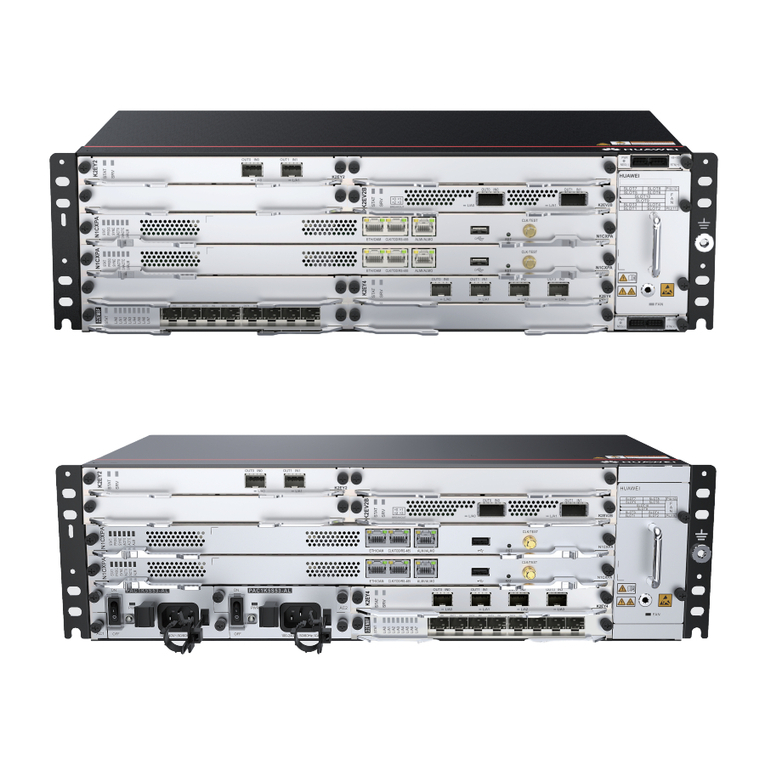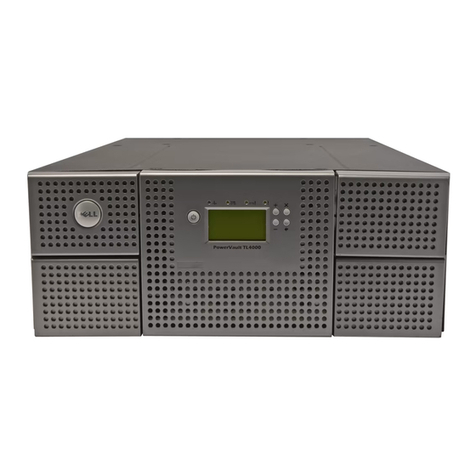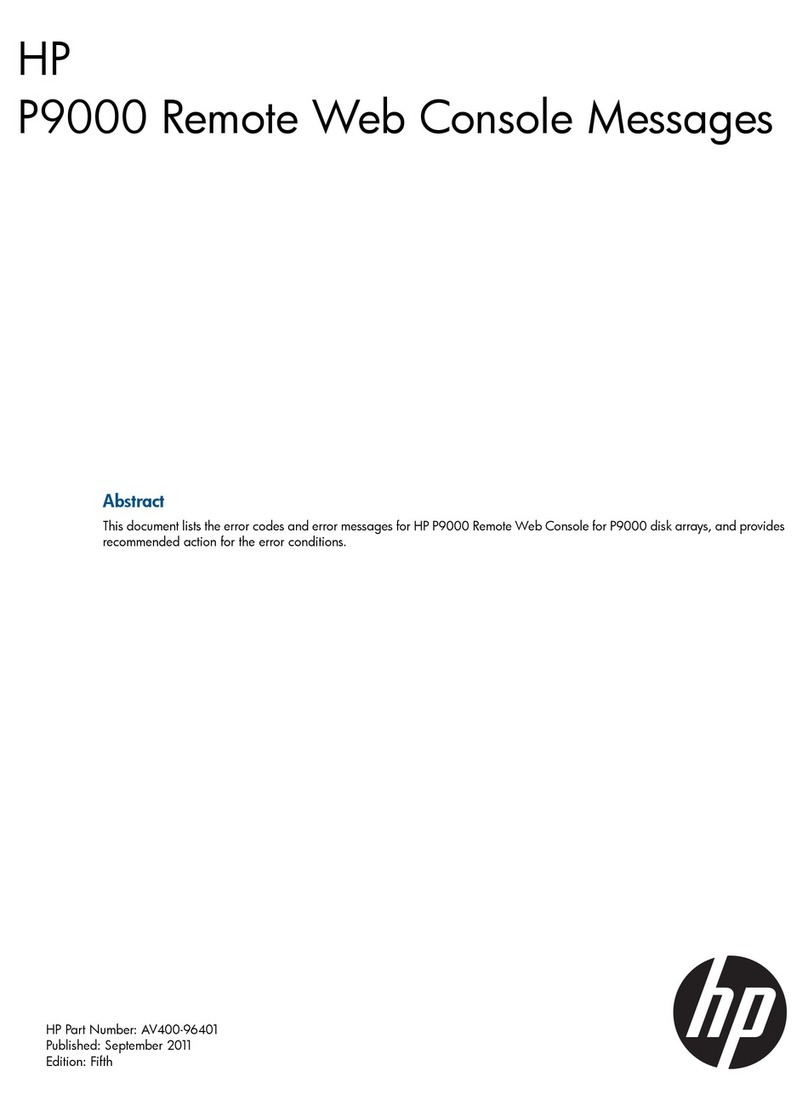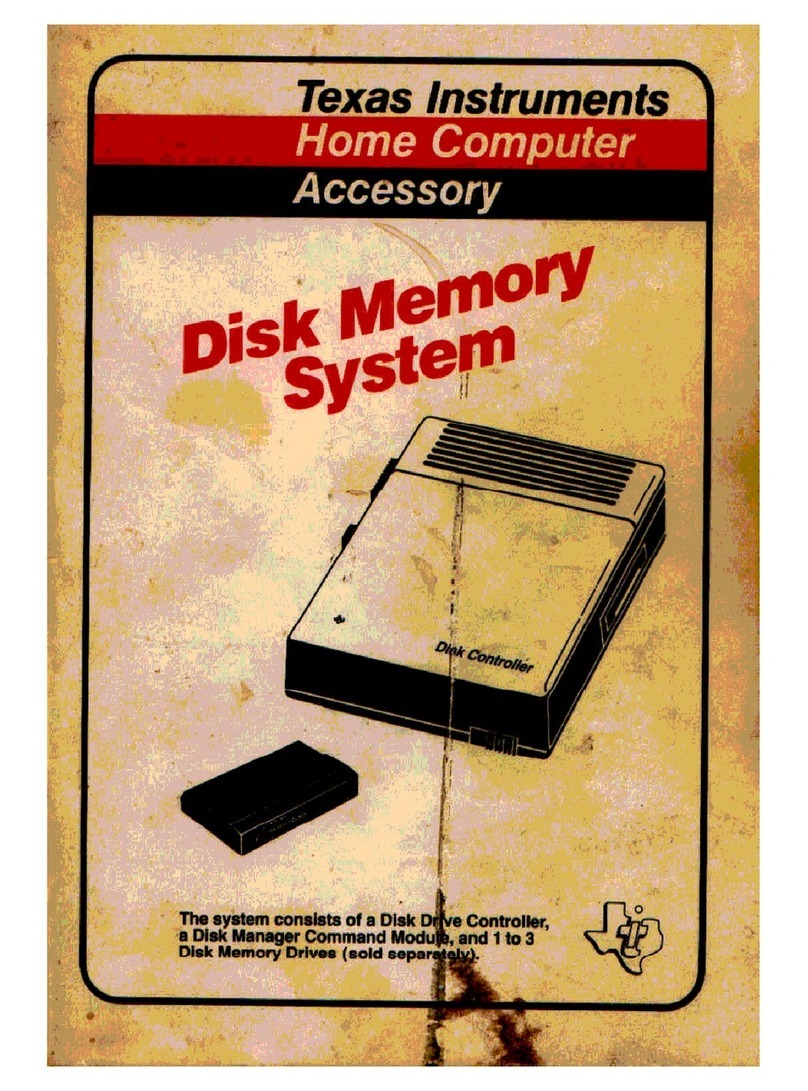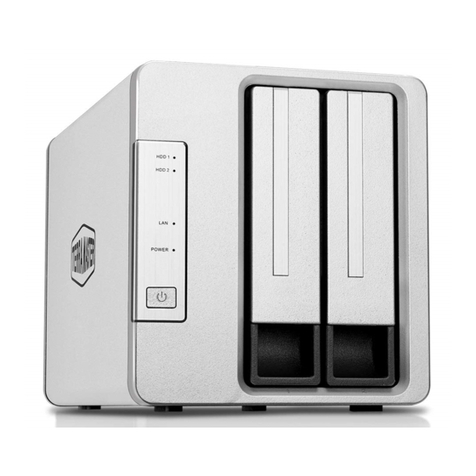MPI 51 User manual

FLEXIBLE
DISK
DRIVE
MODEL
PRODUCT
MANUAL
Revision 3
MICRO PERIPHERAlS INC.

PROPRIETARY NOTICE
Information contained
in
this manual
is
copyrighted,
and
may
not
be
duplicated in full
or
in
part
by
any
person
without prior
written approval from Micro Peripheral,. Inc.
(MPI)
The purpose of
thi'
manual i,
to
provide the user
of
MPI', Model
51/52
Flexible Disk Drives with adequately detailed documenta-
tion necessary for efficient installation, operation, maintenance.
and ordering
of
spare
parts for the equipment supplied.
Every effort
has
been
made
to
keep the information contained
in
this manual current
and
accurate
as
of the date of publication or
revision. However, no guarantee
is
given
or
implied that the
manual
is
error free, or that
it
is
accurate
with
regard
to
any
particular specification.
Publidt«i
April
1980
"CAD
P£iU'IEfW.S
tC.
9754
DtHJfing Allflnue
ChllttwortIJ. C"/iforni,,
9131'
12r3J 709-4202
TWX:
9/0494-/2/3

TABLE
OF
CONTENTS
· . ..
1-3
Page
1-1
1-1
•1-1
1-2
• • 0 • • •
·. . ..
·. . . .
· . . . .
·...
Introduction
••••
Purpose
of
Equipment
Physical
Description
Functional
Description.
Specifications
-
GENERAL
DESCRIPTION
SECTION
1.0
1• 1
1.2
1
.3
1.4
SECTION
2 -
INSTALLATION
AND
CHECKOUT
Flexible
Diskette
Removal
Flexible
Diskette
Loading
•2-1
•
••
2-1
•2-1
• • • 2-3
o02-3
• • • • 2-4
•2-4
•••••2-4
• • • 0 • •2-4
•2-4
•2-5
o2-5
•2-6
·...
Operation
Coo
1i
ng
• • • • •
Input/Output
Cable.
DC
Power • • • • • 0 •
Introduction.
Unpack i
ng
Installation
Hardware • •
Dust Cover •
2.8. 1
2.8.2
2.8.3
Diskette
Handling Recommendations
Initial
Checkout.
• •
••
•
•••••••
2.0
2. 1
2.2
2.3
204
2.5
2.6
2.7
2.8
2.9
SECTION
3 -
INTERFACING
REQUIREMENTS
3.0
Introduction
...··...·
3-1
3.1
Input Lines ······ ·
3-1
3. 1•1 Line
Termination
··· ·•·
3-1
3. 1.2 Programmable Shunt ······ ·
3-1
3. 1.3 Drive
Select
1
to
4···· · ··
3-2
3.1.4
Motor
On
.····•·
3-2
3. 1
.5
Direction
Select
····•·•
3-3
3.1.6
Step
.•.······•·
3-3
3.1.7
Write
Gate · · ····0...···•·
3-3
3. 1.8
Write
Data ······
3-3
ii

TABLE
OF
CONTENTS
(Continued)
SECTION
3 - (Continued) Page
3.1.9
Side
Select.
•••••• •
••
3-3
3.1.10
In
Use
(optional
feature)
• •
••
3-4
3.2
Output Lines
••
0 • 0 • • • • • • • • • •
••••
3-4
3.3
3.4
3.2.
1
3.2.2
3.2.3
3.2.4
Connector J2
Connector
Jl
Track
00
• • • • • • • • 3-4
Index/Sector
•3-4
Write
Protect
•3-4
Read
Data • • • • • • • 3-6
. . . . .
3-6
. • • • . . . .3-6
SECTION
4 -
THEORY
OF
OPERATION
4.0
Introduction.
• • • • • • • • • 4-1
4.
1
How
To
Use
The
Drawi
ngs ••••• 4-1
402General
Description
•••
0 • • • • •
•••
4-2
4.2.1
Head
Positioning
Control
••
4-5
4.2.2
Track
00
Sensor
•••••••••••••••
4-5
4.2.3
Spindle
Drive Control •0 • • • 4-6
4.2.4
Index Sensor
••
• • • • • • 4-6
4.2.5
Head
Load
Mechanism. •4-6
4.2.6
Side
Selection
• • • • • • 4-7
4.2.7
Data Recording and
Retrieving.
•
••••
4-7
4.3
Detailed
Descriptions
••
• • • • • • • • • 4-10
4.3.1
Power
up/Power
down
Logic
••••
4-10
4.3.2
Stepper
Motor Control
Logic.
•••• •4-11
4.3.3
Track
00
Logic • • • • • • •
••
4-12
4.3.4
Drive Motor Control
Logic.
•4-14
4.3.5
Index Logic ••••• 4-16
4.3.6
Head
Load
Logic •0 • • • • • • • 4-16
4.3.7
Side
Select
Logic.
• • • • • • • •
••
4-17
4.3.8
Write
Protect
Logic •4-18
4.3.9
Write/Erase
Logic.
•
•••
4-19
4.3.10
Read
Logic • • • • • •
•••
4-19
iii

TABLE
OF
CONTENTS
(Continued)
SECTION
5 -
MAINTENANCE
AND
TROUBLESHOOTING
Page
5.5.4
5.505
5.0
Introduction
0 • • • •
.5-1
5.1 General
Information
•••• ••
••
.0.5-1
5.2
Tools
Required.
• • • • • • • • • • •
5-2
5.3
Preventive
Maintenance.
••
• • • • • • • •
5-2
5.3.1 Read/Write Head(s) and
Load
Pad
Inspection
•
5-2
5.4 Replacement
Procedures
• • •
5-3
5.4.1
Printed
Circuit
Board Assembly (PCBA). •5-8
5.4.2
Shield
Assembly
•••••••••••••••
5-8
5.4.3 Right-Hand Guide/Write
Protect
Assembly
•••
5-8
5.4.4
left-Hand
Guide Assembly
•••
• • • • 5-9
5.4.5 Front Panel Bezel and
Activity
LED
•••••
5-10
5.4.6
Cone
Assembly.
• • • • • • •
••
5-10
5.4.7
Carrier
Assembly
•••••
•
5-12
5.4.8 Index/Load
Boss.
•
•••••
5-13
5.4.9
Solenoid
•
5-14
5.4.10 Drive
Motor.
•
~
•
5-15
5.4.11 Track
00
Sensor
•••
5-15
5.4.12
Door
Button Assembly • • • • •
5-16
5.4.13
Stepper
Pulley/Band
Assembly •0 • •
5-16
5.4.14
Stepper
Motor.
• • • • • • • • • •
••
5-20
5.4.15
Head/Carriage
Assembly 0 0
••••
5-20
5.4.16
Ejector
Assembly
••••••••
5-21
5.4.17
Spindle
Bearings
••••••••••••
5-21
5.4.18
Head
load
Pad
Assembly
•••••••••
5-25
5.4.19 Harness Assembly • • • •
••••
5-25
~.5
Troubleshooting
Guide
••
••••••••••• ••
5-28
5.501
Prel
iminary
Troubleshooting
Steps
•
5-28
5.5.2 Drive Won't
Step
or
Steps
Erratically
••••
5-28
5.5.3
Head/Carriage
Oscillates
at
Track
00
(Restore
Error)
• • • • • •
•••••••
5-29
Drive Motor Won't
Rotate
••••••••
5-29
Head
Will Not
load
••••
• • • • • • •
5-29
iv

TABLE
OF
CONTENTS
(Continued)
SECTION
5 - (Continued) Page
•
5-31
•5-32
. • • 5-32
•5-32
Bad
Index Output
•••••
• • • 5-29
Bad
Write
Protect
Output
•••••••
5-30
Activity
Indicator
Does
Not
Light.
• • • 5-30
Read
Errors--All
Tracks.
• •
••••
5-30
Read
Errors--Random Tracks •
5-31
Read
Error-Inside
Tracks
•••••••••••
5-31
Cannot
Read
Prewritten
Data;
Can
Read
Self-Written
Data
••••
0
Cannot Write
Data.
Erase
Bad
•0 •
Drive Speed
Unstable
5.5.13
5.5.14
505.15
5.5.6
5.5.7
5.5.8
5.5.9
5.5.10
5.5.11
5.5.12
SECTION
6 -
ADJUSTMENTS
AND
MEASUREMENTS
6.0 I
ntroduct
i
on
• •
6-1
6.1 Tools
Required.
•••••••• •
•••
6-1
6.2
Radial-Track
Alignment.
•
6-1
6.3 Index-To-Data Ali gnment
••••
•6-4
6.4 Track
00
Sensor Alignment
••••••
00
••••
'.
6-5
6.5 Speed Control Adjustment
•••
• • • • • 6-5
6.6 Track
00
End
Stop Adjustment •6-5
6.7 Drive
Belt
Adjustment
••••
• • • •
••••••
6-6
6.7.1 Mylar (Yellow) Drive
Belt
Adjustment
••
6-6
6.7.2
Neoprene (Black) Drive
Belt
Adjustment •6-6
6.8
Ejector
Latch and
Ejector
Latch
Release
Adjustments •6-8
6.8.1
Ejector
Latch Adjustment
••••
• • 6-8
6.8.2
Ejector
Latch Release Adjustment •6-8
6.9 Compliance
Measurement.
••••• ••6-8
6.10
Erase
Measurement • • • • • • 6-9
6~11
High Frequency Playback Measurement •6-9
SECTION
7 -
TRACK
FORMAT
AND
DATA
RECOVERY
Write
Precompensation
7.0
7.1
I
nt
roduct
ion • • • .... . . . . .....
. . . .7-1
•••
7-1
v

TABLE
OF
CONTENTS
(Continued)
SECTION
7 - (Continued)
7.2
7.3 Data Recovery
••••••••••
Track Format--Timing
Considerations
.........
...
Page
•••
7-1
.7-1
APPENDIX
A -
SPARE
PARTS
LIST
•••••
APPENDIX
B -
DRAWINGS
AND
SCHEMATICS
APPENDIX
C -
SIGNAL
NAME
DEFINITIONS
vi
• • • • • • • •A-l
• • • • • • • • • • • •B-1
• • • • • • • •
C-1

LIST
OF
ILLUSTRATIONS
... . . . . . ......
Wave
Forms
in
Read
Sequence
••••••
Stepper
Motor
Control
Timing
•••••
Mo
tor
Con
tro1
Tim
i
ng
• • • • • •
Write
Timing • • •
•••
PAGE
2-2
2-6
3-5
3-5
3-5
3-5
3-5
3-5
3-5
3-5
3-6
3-6
3-7
3-7
3-8
4-3
4-4
4-4
4-4
4-10
4-10
4-13
4-15
4-20
4-22
5-4
5-6
5-11
5-17
5-18
5-22
.,
.
• • • 0
;,
.
.. . .
o • •
·.....
·...
·.
. . ......
....
...... . ..
.....
. . ..
.. . .
• • 0 •
...
Ejector
Assembly
•••••••
Read
Timing
••••••
Top
View
Disk Drive
•••••
Bottom
View
Disk Drive
Activity
Indicator
Assembly
Door
Button Assembly
Stepper
Pulley/Band
Assembly
Outl
ine
and Mounting Dimensions
Diskette
Orientation
Track Access
Timing.
Read
Initiate
Timing
••••••
Read
Signal
Timing •••• •
•••
Write
Initiate
Timing.
•
••••
Write
Data
Timing.
• • •
•••
General Control and Data Timing Requirements (head
load
solenoid
is
activated
with
drive
select)
Index
Sector
Timing
(Soft
Sector)
•••••
Index
Sector
Timing (Hard
Sector)
••••
DC
Power
Connector,
J2
•••••••
Jl
Connector
Dimensions.
Interface
Signals
-51/52 •
Shunt
Configuration
••••
Write
Protect
Option
•••
Functional
Block Diagram
Stepper
Motor Logic
•••
Read/Write Logic
••••••••
Drive Motor Control Logic
••
Basic
Recording Technique
••
FIGURE
2-1
2-2
3-1
3-2
3-3
3-4
3-5
3-6
3-7
3-8
3-9
3-10
3-11
3-12
3-13
4-1
4-2
4-3
4-4
4-5
4-6
4-7
4-8
4-9
4-10
5-1
5-2
5"~
5-4
5-5
5-6
vii

FIGURE
5-7
6-1
6-2
6-3
6-4
6-5
7-1
B-1
LIST
OF
ILLUSTRATIONS
(Continued)
PAGE
Spindle
Assembly
•••••
0 • • •
••••
5-23
Radial Track
Al
ignment
Pattern.
• • • • • • • 6-3
Index-to-Data
Alignment
Pattern
•0 • • • 6-4
Ejector
Block and Latch -
top
view.
•
•••••
6-7
Carrier
arm -
top
view.
• • • • • • • •
••
6-7
Ejector
Assembly.
• • • • • •
••
6-7
Typical
Track
Format.
•
••••
7-2
PCBA
Component Layout • • • • • • • • • •
B-2
viii

TABLE
1-1
1-2
2-1
4-1
5-1
5-2
LIST
OF
TABLES
Data
Capacity
Unformatted
(K
Bytes)
•••
Mechanical and
Electrical
Specifications
Recommended
Connectors
-
Pl
•••••••
Write/Read
and
Side
Selection
Conditions
Remove/Replace Adjustment Check
List
Harness Assembly Wire
List
••••
ix
PAGE
1-3
1-4
2-3
4-17
5-3
5-27

SECTION
1
GENERAL
DESCRIPTION
1.0
INTRODUCTION
This
section
provides
a
physical
and
functional
description,
and
specifications
for
the
Model
51/52
Flexible
Disk
Drives,
manufactured
by
Micro
Peripherals,
Inc.
In
addition
to
the
standard
features
described,
the
fol lowing
additional
features
are
included
in
all
models:
"Write
Protect"
can
be
used
as
"Disk
Installed"
indication.
When
using
FM-encoding,
an
additional
board can
be
plugged
on
for
data
separation.
C.
Termination
of
input
signals
can be
either
150
ohms
or
split
220/330 ohms.
A.
B.
1.1
PURPOSE
OF
EQUIPMENT
The
Model
51/52 Disk Drive
is
acompact
disk
memory
device
designed
for
random-
access
data
storage,
data
entry,
and
data
output
applications.
Typical
appl
ications
are
intelligent
terminal
controllers,
microcomputers,
word
processing
systems,
data
communications
systems,
error
logging,
micro-program
logging,
and
point-of-sale
terminals.
Model
51/52
is
designed
to
meet and perform
to
ANSI
specification.
1.2
PHYSICAL
DESCRIPTION
Hodel 51/52 can be mounted
vertically
or
horizontally.
However,
when
mounted
..
horizontally,
it
is
recommended
that
the
51/52 be
positioned
so
that
the
PCBA
is
on
the
top
side.
The
mechanical components
consist
of
an
aluminum
chassis,
on
which
is
mounted a
spindle
(belt-driven
by
a
dc
motor);
a
stepper
motor/band
combination
for
positioning
the
magnetic
head assembly; and a
c~ne/clutch
assembly
for
centering
and
holding
the
recording
media under
operation.
Access
for
diskette
loading
is
at
the
front
of
the
drive.
The
recording-head
assembly
is
of
a
glass
bonded
ferrite/ceramic
structure,
with
lifetime
expectancy
in
excess
of
20,000
1-1

hours.
The
electronic
circuitry
is
mounted on a
PCBA
located
on
top
of
the
drive.
Power and
interface
signals
plug
directly
into
this
board.
The
following
basic
circuits
are
included:
A.
Stepper
motor
control
logic
B.
Read
circuit.
C.
Write
erase
circuit.
D.
Spindle
motor
speed
control.
E.
Index;
Track
00
and
Write
Protect
sensing.
F.
Head
load
driver.
1.3
FUNCTIONAL
DESCRIPTION
Model
51/52
is
self-contained
and
requires
no
operator
intervention
during
operation.
The
drive
consists
of
a
media-rotating
system,
a
head-load
and
positioning
system,
and a
write/erase
and
read
system.
When
the
front
door
is
opened,
access
for
inserting
the
diskette
is
provided.
When
inserting
the
diskette,
all
positions
except
in/out
are
controlled
by
physical
guides
internally.
Correct
in/out
is
assured
by
inserting
the
diskette
until
a
"click"
is
heard.
Closing
the
front
door
activates
the
cone/clutch
system
which
serves
two
purposes
in
the
following
order:
A.
Correct
centering
of
the
media.
B.
Clamping
the
media
to
the
spindle
hub.
The
spindle
hub
rotates
at
a
constant
speed
of
300
rpm
by
means
of
a
DC
motor/
t~chomet~r·
and a
reference
in
a
closed-loop
system.
When
in
operation,
it
is
important
that
the
head-to-media
relationship
be
controlled.
This
is
accomplished
by
the
head-load
system
in
the
following
way: The media
is
pressed
against
a
reference
platen
which
is
referenced
to
the
head and
the
spindle
hub; and
a
pressure
pad
is
loaded
against
the
media on
the
opposite
side
of
the
head
with
a
force
of
approximately
17
gr.
The
recording
head
is
positioned
over
the
correct
track
by
means
of
a
four-phase
stepper
motor/band
direct-drive
mechanism,
1-2

and
its
associated
electronics.
A
one-step
movement
causes
a
one-track
.avement.
With
band
positioning,
very
high
step
rates
can
be
accomplished
with
the
51/52
system.
When
a
Write
Protected
diskette
is
inserted,
the
write
protect
sensor
normally
disables
the
write/erase
circuits
in
the
drive.
When
writing,
a
0.00525
inches
(nominal)
data
track
is
recorded,
followed
by a
tunnel
eras~
~hilh
trims
the
track
down
to
0.0050
inches
(nominal).
Data
recovery
electronics
include
a
low-frequency
amplifier,
a
differentiator.
a
cross-over
detector.
a
digital
filter,
and
a
final
pulse
eenerator.
For
FM
recording
a
data
decoder
may
be
added
to
achieve
separated
clock
and
data
pulses
on
the
1/0
connector.
1.4
SPECIFICATI01~S
The
mechanical
and
elpctrical
specifications
for
the
Model
51/52
Flfxible
Disk
Drives
are
given
in
Table
1.2.
Data
capacity
for
the
Model
51/52
Flexible
Disk
Drives
1s
given
in
Table
1.1.
TABLE
1-1
DATA
CAPACITY
UNFORMATTED
(K
BYTE~)
--
--
----,---------------------
100(1
6.25
II
___
1..
DOl1BLE
l:E~S
ITY
(MFM, MFl':)
1 - I - -
9i
i
25
00
S
INGLE
DENS
1TY
(FH)
PARAMETEI:
r--
91
92
9
_.~.
Tl"ack 13•13
3.13
6.
•500
t
Disk
250 5
Il
1-3

Power
Typical
Power
Dissipation
Media
Number
of
Tracks
Trac'k Der:si
ty
Rotational
Speed
Average
Latency
Head
loading
tillle
Access
time
TABLE
1-2
MECHANICAL
AND
ELECTRICAL SPECIFICATIONS
rCHARACTERISTICS
-------
.
--1
..
I
!
ANSI
standard
5
1/4
-inch
di~kette
80/91
160/92
96
TPI
300
rpm
::t
11/2%
100 msec
35
msec
5
msec,
track-to-tlack
15 msec
20,000
l'ours
.
3x106
passes
on a
single
track
2
FM,
MFM,
M
FM
2961/5922
bpi
max.
5922
fci
max.
125K/250K
bits/sec.
0.5
sec
3.25
ipches
(8.255
cm)
5.75
inches
(14.605
em)
7.6
inches
(19.30
em)
3.1
pounds
(1.41
kg)
+12
VDC
±
5%,
0.7p
(l.4A
surge),.2V
ripple
+5
VDC
±
5%,
0.4A,
.1
V
ripple
l1W
Operation
6W
Standby
40
F
to
115 F
(4.4
C
to
46.1
C)
-40
F
to
160 F
(-40
C
to
71
C)
20%
to
80%
(noneondensing)
5%
to
95%
(noncondensing)
-500
ft
to
10,000
ft
(-152.4m
to
3,046rn)
-1000
ft
to
50,000
ft
(-304.8m
to
15,
240m)
6
to
600 Hz,
0.5g
9,200
Hours
0.5
Hours
Operating
Temperature
Non
Operating
Tempelature
Operating
Hurridity
Non
Operating
Humidity
Operating
Altitude
Non
Operating
Altitude
Vibration
and Shock
(Operating)
MTBF
MTTR
PARAMETER
Head
settling
time
Head
life
Media
life
Recording
method
RecoYding
density
Flux
density
Data-transfer
rate
Power-up
Delay
Height
Width
Length
Weight
1-4

SECTION
2
INSTALLATION
AND
CHECKOUT
2.0
INTRODUCTION
This
section
provides
the
information
and
procedures
necessary
to
place
Model
51/52
Flexible
Disk
Drives
into
operation.
2.
1
UN
PAC
KIN
G
During
unpacking,
care
must be
exercised
to
ensure
that
all
tools
are
non-magnetic
and do
not
inflict
damage
to
the
unit.
As
the
unit
is
unpacked,
inspect
it
for
possible
shipping
damage. All
claims
for
this
type
of
damage
should
be
filed
promptly
with
the
transporter
involved.
If
a
claim
is
filed
for
damages, save
the
original
packing
material.
Most
packing
material
may
be
reuseable
if
reasonable
care
is
used in
unpacking.
Unpack
the
drive
as
follows:
A.
C.
D.
E.
F.
. -
G.
Remove
external
packing
material
carefully.
Remove
the
drive
from
the
container.
Remove
internal
packing
materials,
following
instructions
provided
on
the
package.
Ensure
that
front
access
door
opens
and
closes,
and
that
the
head-load
arm
raises
when
door
is
opened.
Ensure
that
bezel
is
secured.
Ensure
that
drive
hub
manually
rotates
freely.
Ensure
that
stepper
motor/head
carriage
assembly
is
not
binding
at
any
point,
by
manually
moving
carriage
back and
forth.
2.2
INSTALLATION
Due
to
its
small
size
and
light
weight,
Hodel
51/52
can be
installed
or
mounted
in
any
convenient
location
or
position.
However,
the
drive
must be
installed
in
a
location
that
will
prevent
the
1/0
cable
from
exceeding
10
feet
in
length.
Refer
to
Figure
2-1
for
dimensions
and mounting
provisions.
2-1

Bottom
View
Top
View
-
J(7.94 em)
~~
~t:J
I
II
I
".
I
:[
I
I
....
!
~
i
1"""'1""'\.
-
..
5.87
(14.91 em)
hU
~~
-
1,1
cq
nI ; i i
'---'
.....
1--.
,j
!
I
I
I
I
5.75
(
..
t
.61
em)
.125
(.318 em)
~
-r
I
I
I
5.500
(13.97 em)
J
3.125
1.87
(4.74 em)
Single Interface
Connector (J 1)
±-
0.010
±.
0.020
.xxx
.
xx
Unless otherwise stated,
dimensions are in inches.
Tolerances:
NOTE:
.06
typ
(.15 em)
6.32 x
.31
deep
(4)
mtg. holes
t=
Door
Onen
Position
'"
_
~PCB
L.I.....
DC Power
Connector
(J2)
1
I/..
6.32
thru
mtg.
holes (2 pies. each side)
3.38 I , 1
(8.59 em)
~
-f-
~
-
--'-
ttl
.875 (2.22 em)
.06
typ
J
II
..
1.87
..
~
3.125 !
~
(.15cm)
14.74 em)
17.94cm)
I
.31----..
7.5 max 1(19.0 em)
_J
(,79 em)
Door
Closed
Position
N
I
N
Side
View
Figure
2-1:
Outline
and Mounting Dimensions

2.3
HARDWARE
The
flexible
disk
drive
is
a
precision
device
in
which
certain
critical
internal
alignments
must be
maintained.
Therefore,
in
keeping
with
rigid
disk
requirements,
it
is
important
that
the
mounting hardware does
not
introduce
significant
stress
on
the
drive.
Any
mounting scheme in which
the
drive
is
part
of
the
structural
integrity
of
the
enclosure
is
not
permitted.
Since
the
disk
drive
cannot
be
subjected
to
significant
stress
when
it
is
slide
mounted,
this
type
of
mounting
generally
satisfies
the
foregoing
requirements.
Mounting schemes
should
allow
for
adjustable
brackets
or
incorporate
resilient
members
to
accommodate
tolerances.
Mounting schemes
involving
more
than
two
hard
mounting
points
and a
third
point
should
be
avoided.
2.4
DUST
COVER
Since
the
flexible
disk
drive
is
not
provided
with
a
dust
cover,
the
design
of
an
enclosure
should
incorporate
ameans
to
prevent
direct
ingress
of
loose
items,
e.g.,
dust,
paper
punch
waste,
etc.
Table
2-1
RECOMMENDED
CONNECTORS
-
PI
CONNECTOR
TYPE
OF
CABLE
MANUFACTURER
PIN
CONTACT
PIN
_.----
Twisted
Pair,
26
AMP
583717-S 1-583616-1
Fl
at
Cab
1e
3M
"Sco
tchf1ex"
3463-0001 N.A. _
..
_._--
2-3

2.5
COOLING
Heat
dissipation
from a
single
disk
drive
is
normally
15
watts
(40
Btu/Hr).
When
the
drive
is
mounted
so
that
the
components have
access
to
free
flow
of
air,
normal
convection
cooling
allows
operation
over
the
specified
temperature
range.
When
the
drive
is
mounted
in
a
confined
environment,
air
flow
may
have
to
be
provided
to
maintain
specified
air
temperatures
in
the
vicinity
of
the
motors,
PCBA,
and
the
diskette.
2.6
INPUT/OUTPUT
CABLE
Refer
to
Table
2-1
for
cable
connector
part
number and
attachment.
The
maximum
cable
length
from
connector
to
connector
is
10
feet.
All
inputs
and
outputs
are
paired,
one
line
for
function,
one
for
ground.
Figure
3-11
provides
information
relative
to
the
connector
pin/signal
assignments
for
1/0
cable.
2.7
DC
POWER
DC
power
to
the
drive
is
via
connector
P2/J2,
which
is
located
on
the
non-
component
side
of
the
PCBA
near
the
spindle
motor.
The
drive
uses
+l2V
DC
and
+5V
DC.
Table
1-1
outlines
the
voltage
and
current
requirements.
The
connector
is
an
AMP
Mate-N-Lock
Part
No.
1-480424-0.
2.8
OPERATION
The
Model
51/52
Flexible
Disk Drive
is
under
direct
control
of
the
interface
and power
sources.
No
special
start-up
procedures
are
necessary.
Secure
both
p~wer
and
1/0
connectors
prior
to
disk
loading.
2.8.1
A.
B.
Flexible
Diskette
Loading
Apply
DC
power
to
drive.
Open
drive
door
by
pushing
door
latch
button.
2-4

.c.
D.
2.8.2
A.
B.
c.
Remove
diskette
from
its
storage
envelope
and
insert
in
the
drive
•
The index
hole
must be
on
the
left
side
of
the
jacket
and
the
label
on
the
right
towards
the
door.
Push
the
diskette
forward
until
a
"cl
ick"
is
heard.
(See
Figure
2-2).
Close door
by
pushing door
down
until
latch
secures
the
door.
Flexible
Diskette
Removal
Open
the
drive
door
by
pushing door
latch
button.
The
flexible
diskette
will
automatically
be
ejected
to
a
position
where
it
can
be
easily
removed.
Always
store
the
diskette
in
its
storage
envelope
in
order
to
maintain
the
highest
data
integrity.
Close
drive
door.
2.8.3
Diskette
Handing Recommendations
Since
the
recorded
diskette
contains
vital
information,
resonable
care
should
be
exercised
in
its
handling.
Longer
diskette
life
and
trouble-free
operation
will
result
if
the
following
recommendations
are
followed:
A.
Do
not
use a
writing
device
which
deposits
flakes
(i.e.,
lead
or
grease
pencils)
when
writing
on
a
diskette
jacket
label.
B.
Do
not
fasten
paper
clips
to
diskette
jacket
edgeso
C.
Do
not
touch
diskette
surface
exposed
by
jacket
slot.
D.
Do
not
clean
diskette
in
any manner.
E.
Keep
diskette
away
from magnetic
field
and from
ferro-magnetic
materials
that
may
be
magnetized.
F. Return
diskette
to
envlope
when
removed from
drive.
G.
Protect
diskette
from
liquids,
dust
and
metallic
substances
at
all
times.
2-5

D.
H.
Do
not
exceed
the
following
storage
environmental
conditions:
Temperature:
SOoF
to
12S
QF(10°C
to
SlOC)
Relative
Humidity:
8%
to
80%
Maximum
Wet
Bulb: 8SoF
(29.4°c)
I.
Diskette
should
be
stored
when
not
in
use.
2.9
INITIAL
CHECKOUT
The
following
procedure
should
be used
to
determine
that
the
Model
Sl/52
is
operational.
This
procedure
assumes
that
the
drive
is
installed,
lID
cable
and power
are
connected,
and
that
the
steps
in
2.1
have been
completed.
A.
Apply low
level
signal
to
MOTOR
ON
and
assure
that
spindle
hub
rotates
in
correct
direction
(clockwise
from
top
of
drive).
B.
Load
the
diskette
and
apply
a
head-load
command
to
the
drive.
Check
that
head-load
solenoid
actuates
and
indicator
lights
on
front
panel.
Select
proper
device
address.
C.
Apply
stepping
and
direction
commands
to
the
unit.·.
Verify
that
the
actuator
steps
as
commanded.
Remove
all
command
signals,
turn
power
off
and
return
diskette
to
its
storage.
Figure
2-2:
Diskette
Orientation
2-6
This manual suits for next models
1
Table of contents
Popular Storage manuals by other brands
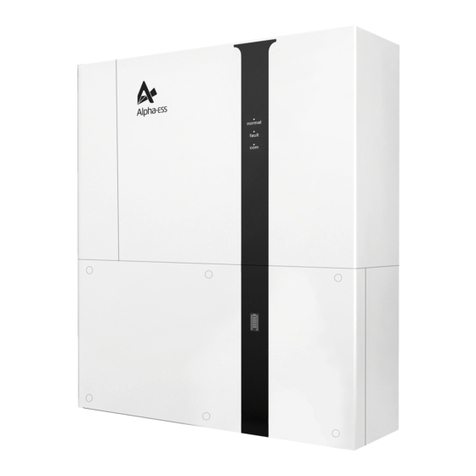
Alpha ESS
Alpha ESS SMILE-B3-PLUS installation manual
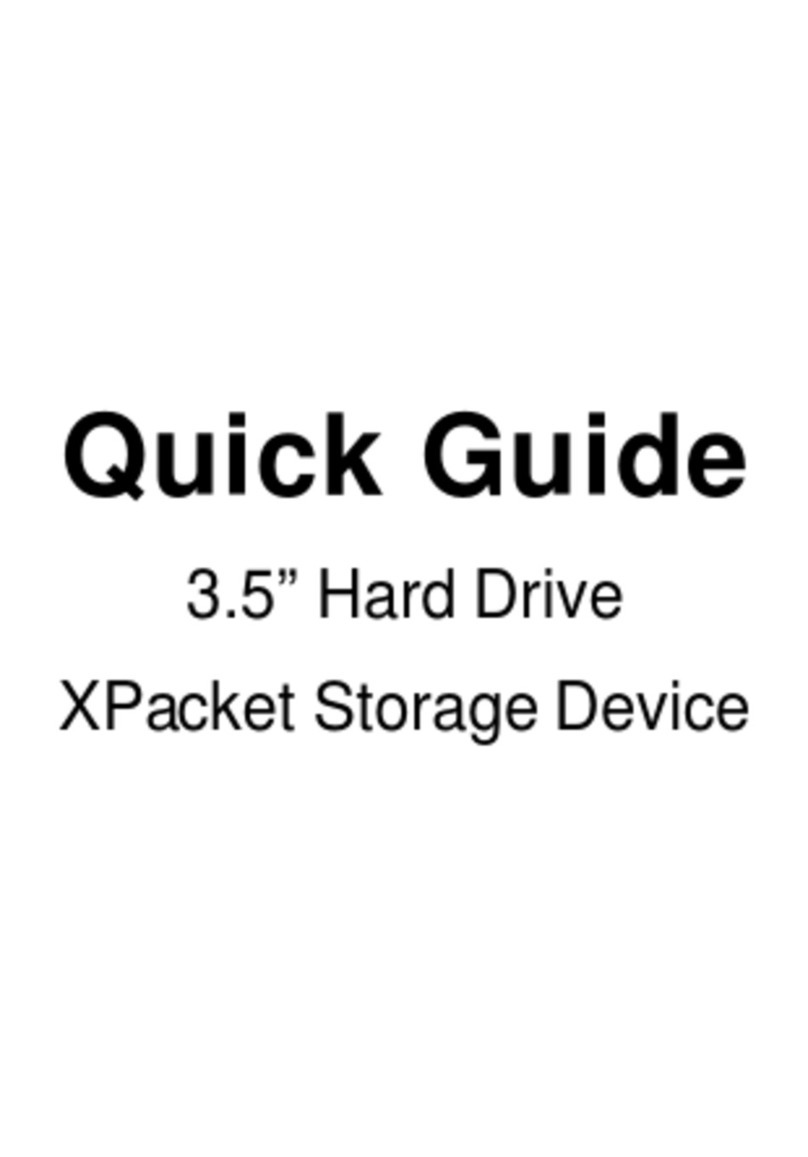
Dat Optic
Dat Optic XPacket Storage Device quick guide
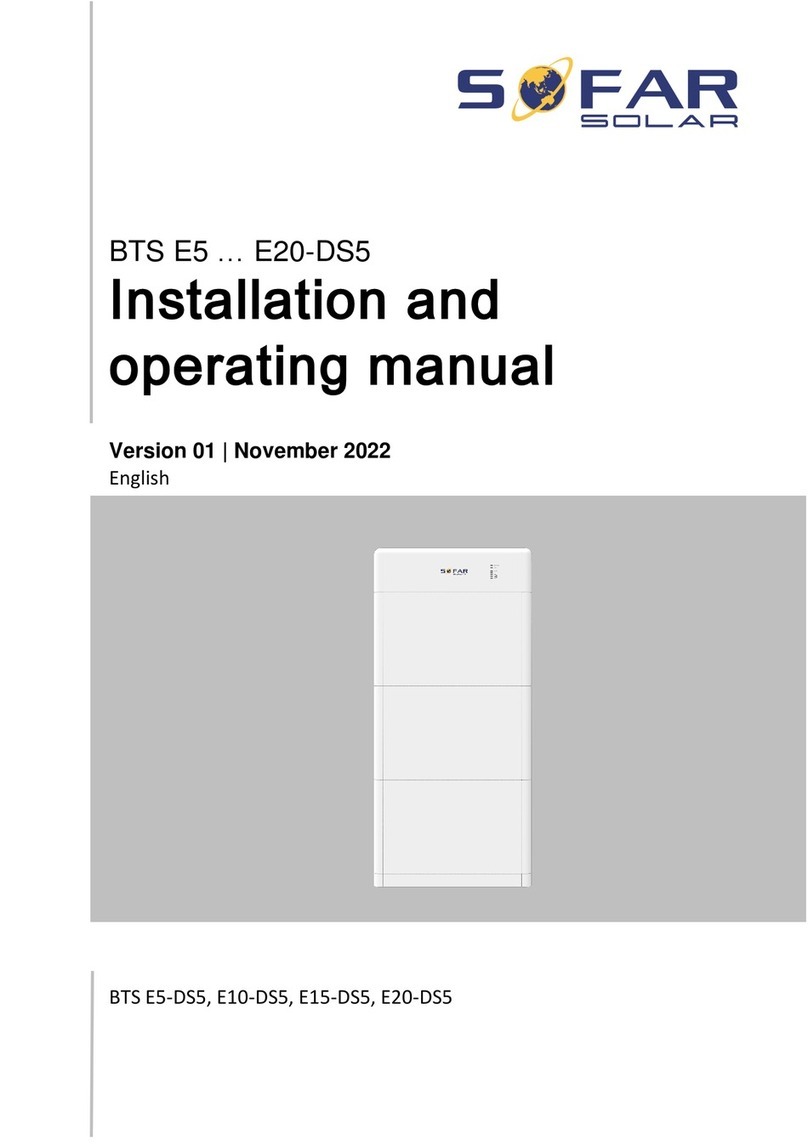
Sofar solar
Sofar solar BTS E5-DS5 Installation and operating manual
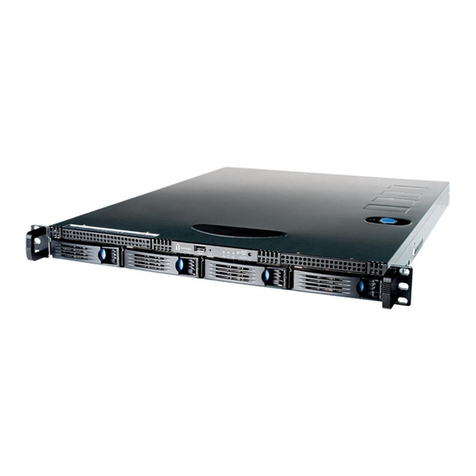
Iomega
Iomega StorCenter ix-Series quick start guide
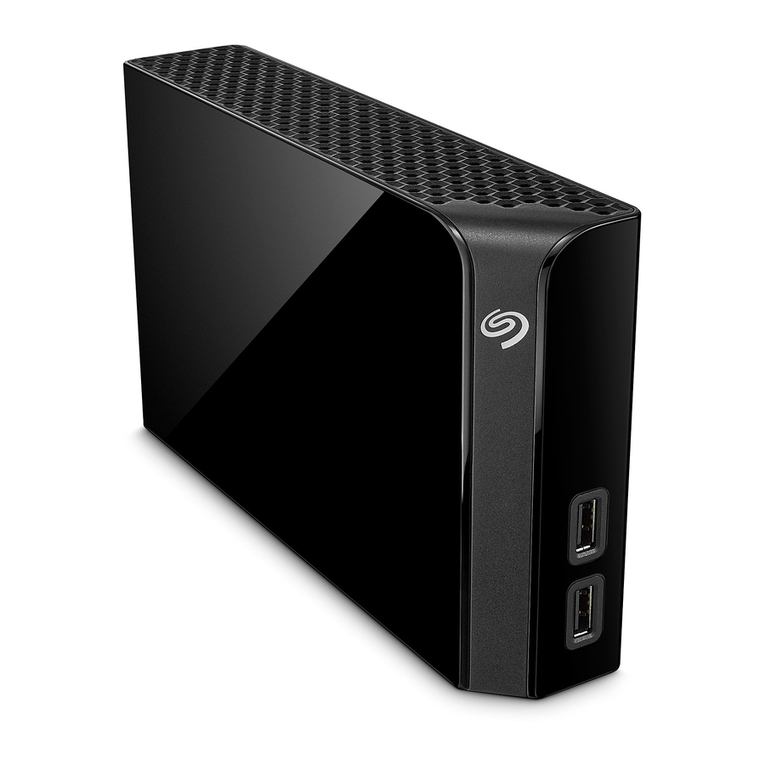
Seagate
Seagate Backup Plus Desktop quick start guide
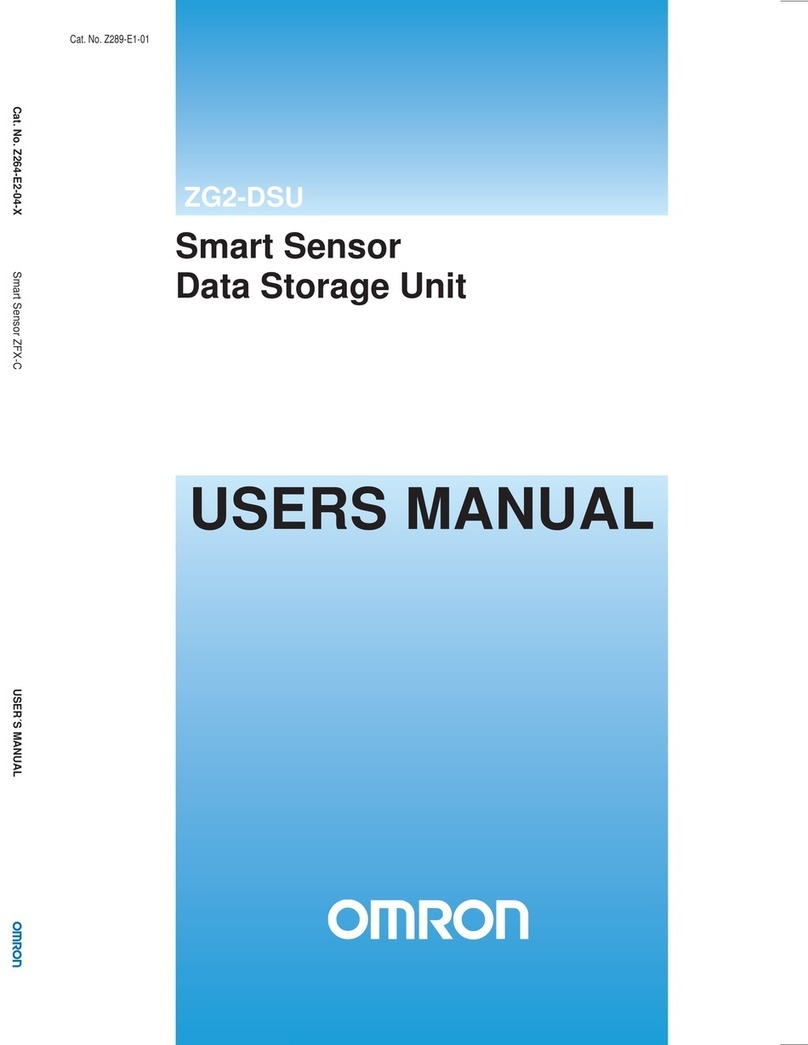
Omron
Omron ZG2-DSU user manual

Infortrend
Infortrend EonStor A12E-G2121 Quick installation guide
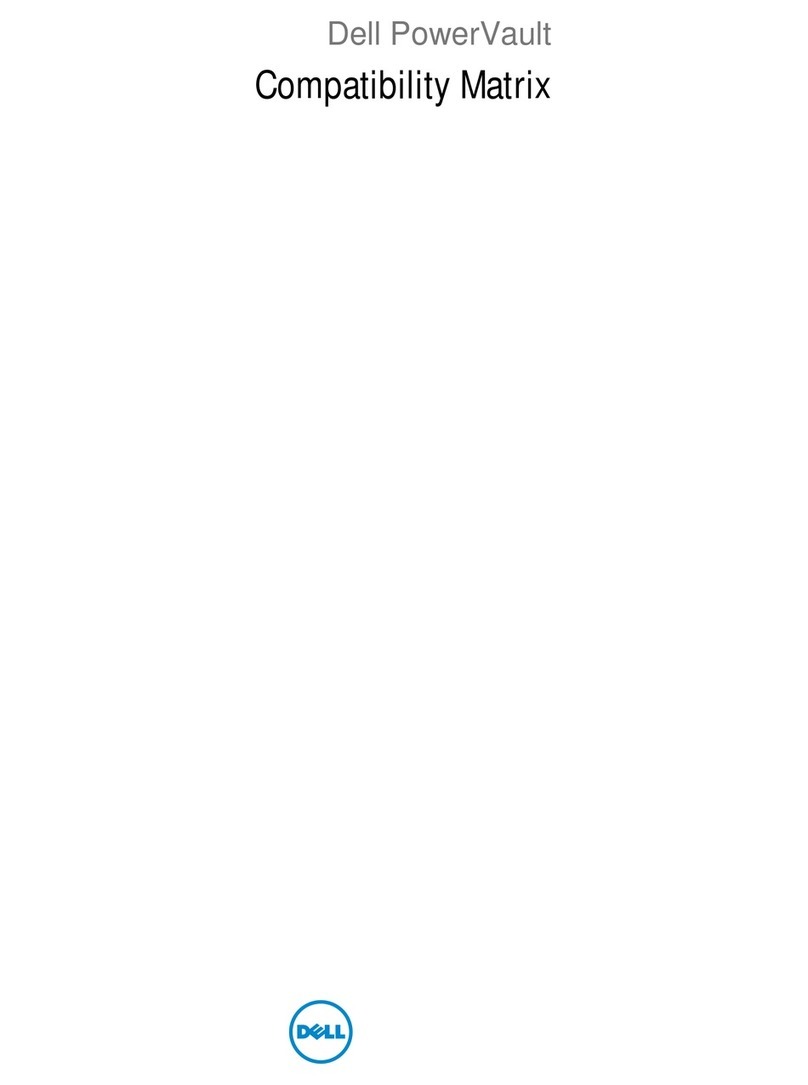
Dell
Dell PowerVault 100T TR40 manual
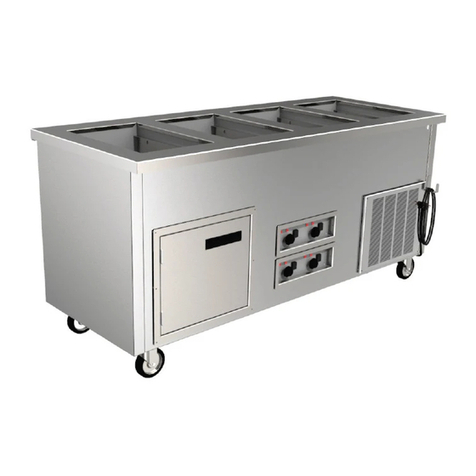
Delfield
Delfield Shelleyglas KFW-1-NU Installation, operation and maintenance manual
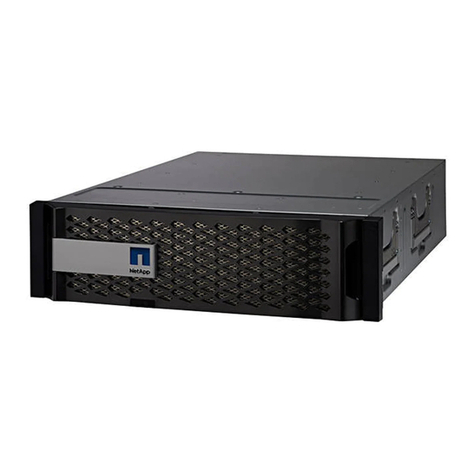
NetApp
NetApp FAS500f manual
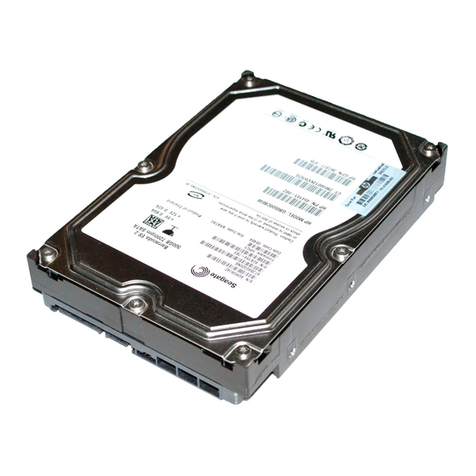
Seagate
Seagate ST3100011A - 100GB UDMA/100 7200RPM 2MB IDE Hard... product manual

Harris
Harris Nexio G8 Hardware manual
